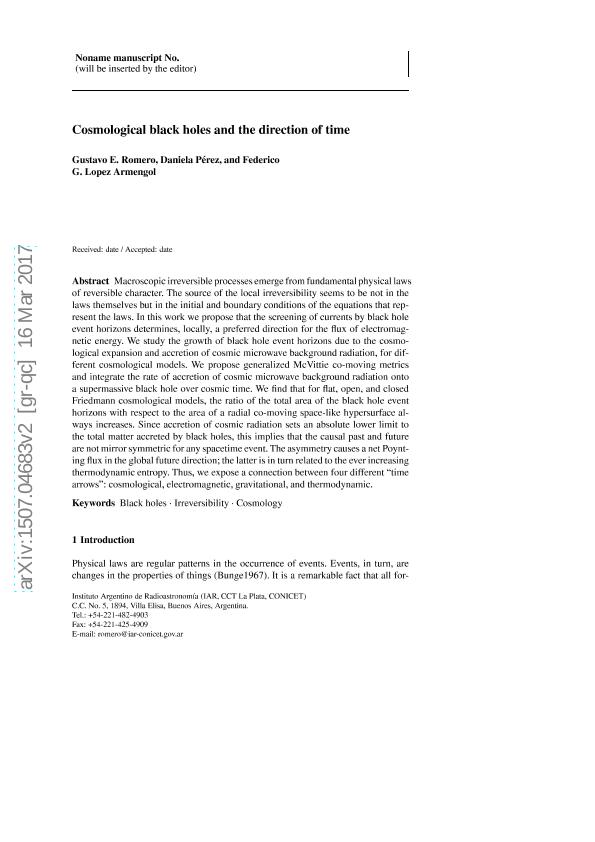Artículo
Cosmological black holes and the direction of time
Fecha de publicación:
03/2017
Editorial:
Springer
Revista:
Foundations of Science
ISSN:
1233-1821
Idioma:
Inglés
Tipo de recurso:
Artículo publicado
Clasificación temática:
Resumen
Macroscopic irreversible processes emerge from fundamental physical laws of reversible character. The source of the local irreversibility seems to be not in the laws themselves but in the initial and boundary conditions of the equations that represent the laws. In this work we propose that the screening of currents by black hole event horizons determines, locally, a preferred direction for the flux of electromagnetic energy. We study the growth of black hole event horizons due to the cosmological expansion and accretion of cosmic microwave background radiation, for different cosmological models. We propose generalized McVittie co-moving metrics and integrate the rate of accretion of cosmic microwave background radiation onto a supermassive black hole over cosmic time. We find that for flat, open, and closed Friedmann cosmological models, the ratio of the total area of the black hole event horizons with respect to the area of a radial co-moving space-like hypersurface always increases. Since accretion of cosmic radiation sets an absolute lower limit to the total matter accreted by black holes, this implies that the causal past and future are not mirror symmetric for any spacetime event. The asymmetry causes a net Poynting flux in the global future direction; the latter is in turn related to the ever increasing thermodynamic entropy. Thus, we expose a connection between four different “time arrows”: cosmological, electromagnetic, gravitational, and thermodynamic.
Palabras clave:
Black Holes
,
Cosmology
,
Irreversibility
Archivos asociados
Licencia
Identificadores
Colecciones
Articulos(IAR)
Articulos de INST.ARG.DE RADIOASTRONOMIA (I)
Articulos de INST.ARG.DE RADIOASTRONOMIA (I)
Citación
Romero, Gustavo Esteban; Pérez, Daniela; Lopez Armengol, Federico Gaston; Cosmological black holes and the direction of time; Springer; Foundations of Science; 3-2017; 1-12
Compartir
Altmétricas




